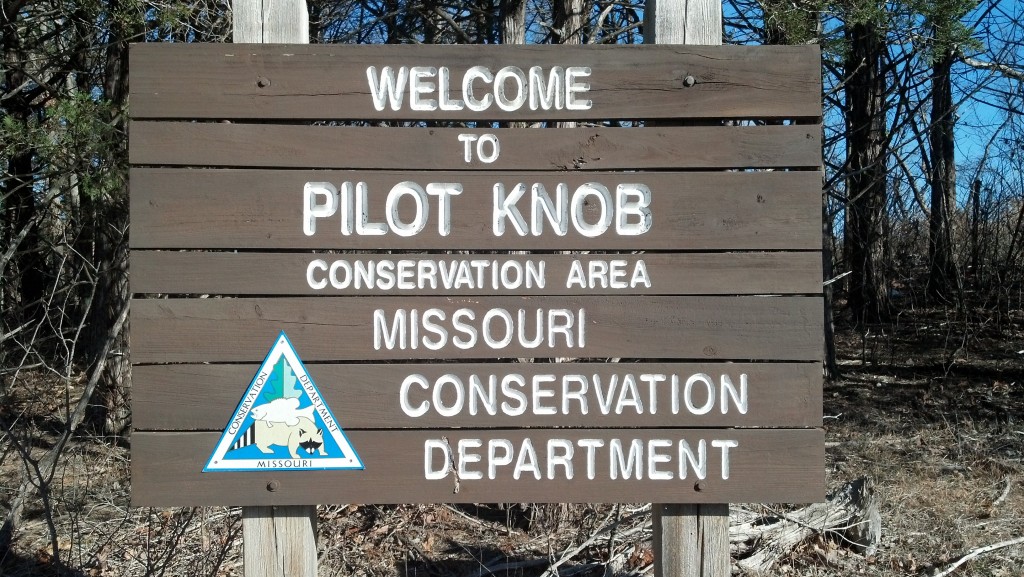I had occasion to visit the 1,360 acre Pilot Knob Conservation Area near Carr Lane, Missouri. I hiked a portion of the winding 2.7-mile trail on a cold and blustery day (nearby Berryville, Arkansas recorded 47 mile per hour wind gusts.) What I saw was beautiful, but similar to the hillsides and hilltops here in and around the hollow, with big trees and rocky outcroppings. Under a crossing overhead power line I noticed a couple of fields of turnips and lots of signs (scat) of coyotes on the hiking trail. I wonder what species in particular the turnip food plots are for?
Ninety percent of the Pilot Knob Conservation Area is forested, while the remaining bits are Ozark glades or glade restoration projects. Ozark glades are naturally occurring savannah-like openings in the forest, where the specialized habitat allows certain species to flourish. The glades I am familiar with are very rocky and dry, almost like a desert, with species you might expect only in the desert, such as prickly-pear cactus, scorpions, tarantulas and lots of lizards and butterflies. I am sure there is more to it, but that is my impression from the local glades I have seen. Like other openings, Ozark glades are often overrun by that aromatic but invasive bully, the Eastern Red Cedar. Ozark glades in a natural state would burn off periodically, keeping the ambitious red cedar in check.
The glade restoration project I saw in the Pilot Knob Conservation Area seemed to be just passed the stage of opening up the forest with cutting, bulldozing and burning, leaving big oaks thinly spaced. I wonder if they’ll do much planting of glade grasses and wildflowers and such? Obviously, restoring an Ozark glade to its natural state will take awhile to get right. Interesting.

